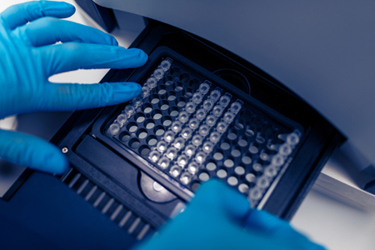How To Evaluate And Compare Real-Time PCR Reactions Using Key Performance Parameters

Real-time PCR, or quantitative PCR (qPCR), is a widely used technique for quantifying target sequences in biological samples. However, when reactions are conducted under different conditions or with varying reagents, direct comparison of results becomes challenging. This application note details the template-independent factors that influence qPCR performance, including the impact of master mix composition, instrument variability, and the use of passive reference dyes like ROX.
It discusses the significance of key performance parameters such as Ct values, PCR efficiency, and dynamic range in ensuring accurate comparisons across different qPCR reactions. With this guidance, researchers can effectively evaluate and compare qPCR reactions, ensuring that the results are reliable and comparable even when experimental conditions differ. Download the application note now for insights that can help you to better enhance the consistency and reliability of real-time PCR data interpretation across various experimental setups.
Get unlimited access to:
Enter your credentials below to log in. Not yet a member of Cell & Gene? Subscribe today.
